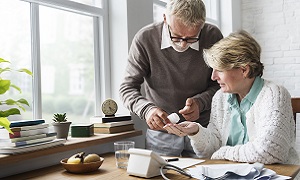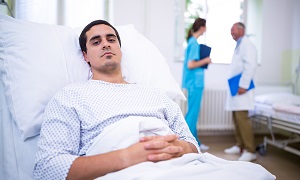Bronchoscopy
Bronchoscopy is a test which can help your doctor to examine your airways. The procedure involves your doctor threading an instrument known as a bronchoscope, through your nose or your mouth, in order to reach your lungs.
This bronchoscope is made of a flexible fiber-optic material and is equipped with a light source as well as a camera. Generally, bronchoscopes are also mostly compatible with color video, which can help your doctor to document his/her findings.
Purpose
Bronchoscopy is generally performed to find the cause of a lung condition. For example, if you have a persistent cough or an abnormal chest X-ray, then this test might be recommended by your doctor.
Some of the reasons this procedure might be performed include:
- Diagnosis of a lung problem
- Biopsy of tissue from the lung
- Removal of mucus, a foreign body, or any other obstruction in the airways or lungs, like a tumor
- To place a small tube to hold open an airway
- Treatment of a lung problem, i.e. interventional bronchoscopy.
During certain procedures, special devices might be passed through the bronchoscope, such as a tool in order to obtain a biopsy, an electrocautery probe in order to control bleeding.
Preparation

As you prepare for a bronchoscopy, it might involve restrictions on food and medications. Your doctor is going to most likely ask you to stop taking blood-thinning medications. You will also be most likely asked not to eat or drink around eight hours before your procedure.
If you will be going home right after the procedure, it is important to arrange for a friend or family member to take you home. Because of the side effects of the medications, you will not be able to drive. You might also want to have someone stay with you for the night.
The procedure might be done in a clinic or an operating room in a hospital. The entire procedure, as well as recovery time, should take around four hours.
Before the procedure, you are going to be asked to sit back or lie on a table or a bed, at your sides. You are going to be connected to monitors as well so that the healthcare team is able to track your heart rate, blood pressure as well as your oxygen level during your procedure.
Next, you are going to receive sedatives, so that you don’t feel any pain during the procedure.
Procedure
Once you are relaxed, your doctor is going to insert the bronchoscope into your nose. It passes from your nose down to your throat until it reaches the bronchi. The bronchi are the airways in the lungs.
Brushes or needles might be attached to the bronchoscope to collect any tissue samples from the lungs. These samples can help your doctor diagnose any lung condition that you might be having.
Your doctor might also use a process called bronchial washing to collect cells. This involves the spraying of a saline solution on the surface of the airways. Next, the cells are going to be washed off of the surface and then collected as well as looked at under a microscope.
Depending on your condition, your doctor might find one or more of the following:
- Blood
- Mucus
- Swelling
- Infection
- Blockage
- Tumor
If your airways are blocked, a stent might be required to keep them open. This device is a small tube which can be placed into your bronchi with the help of a bronchoscope.
After your doctor is done examining the lungs, the bronchoscope is going to be removed.
After the procedure
After the procedure, you are going to be monitored for several hours. Your mouth and throat might also feel numb for a couple of hours. Unless your numbness wears off, you are not going to be allowed to eat or drink. This generally helps food and liquid, from entering your airways and lungs.
Generally, you should be able to cough and swallow again, when your mouth and throat is no longer numb. You can start with sips of water, and then move on to soft foods, such as soup or applesauce.
Note that you might also experience a mild sore throat, hoarseness, cough, or muscle aches. Gargling with warm water should help you lessen the discomfort.
If you experience any of the following, call your doctor right away.
- Have a fever that lasts over 24 hours
- Have increasing chest pain
- Cough more blood than normal
- Have difficulty breathing
Generally, your doctor is going to discuss the results with you one to three days after your procedure. He/she will most probably talk about how to treat any lung problems if any were discovered. You might need more tests and procedures as well.
If a biopsy was taken during the test, then it is going to need reviewing by a pathologist. Since the tissue samples require special preparation, sometimes test results can take longer than others to return. Some biopsy specimens are going to be sent for genetic testing, which can take over two weeks.
Risks & complications
Complications from a bronchoscopy are not only rare but also mostly minor. They can be related to the procedure itself, or from the sedative or topical numbing medicine.
If a biopsy was taken, you may experience bleeding. Fever is common after a bronchoscopy but it is not always a sign of an infection.
In rare cases, an airway can get injured during the test, and if the lung is punctured, air might collect in the space around the lung, which can cause the collapse of the lungs. This condition is treatable but might require a hospital stay.

